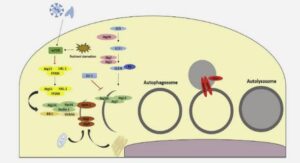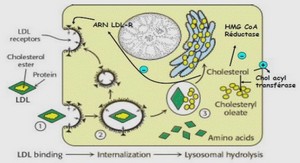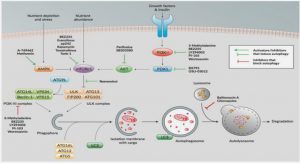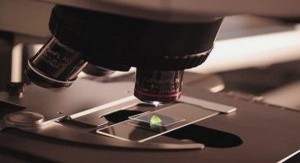La persistance du virus de l’hépatite E dans un élevage de porcs naisseur-engraisseur
Population dynamics model
The population model represents the population dynamics on a typical farrow-to-finish pig farm managed according to a specific batch rearing system (BRS) (Cador et al., 2016). As such, three main hierarchical levels were considered: individual, population and facilities (Andraud et al., 2009b).
Individuals
Individuals are characterised by an identity number, their age, sex, physiological stage and 144 their location on the farm (room and pen numbers). The individual physiological stage defines the subpopulation the animal belongs to: growing pigs or breeding sows. Additional state variables describe the sow’s reproduction cycle: parity rank, time to next oestrus, time to next parturition, and time to next artificial insemination (AI).
Population
The farm is managed according to a BRS, meaning that the herd population is divided into 152 batches. The reproductive cycle of sows in a given batch are synchronised so that all breeding 153 events (i.e. AI, farrowing and weaning) occur at the same time. Consequently, a given batch 154 of sows gives birth to piglets simultaneously, these contemporary piglets forming a group of 155 growing pigs also constituting a batch.
Facilities
According to their physiological stage, animals evolve through five types of facilities: the quarantine, gestating and farrowing facilities for breeding sows; the farrowing, nursery (i.e. weaning) and finishing facilities for growing pigs (Figure 1). Farrowing, nursery and finishing 162 facilities are divided into several rooms, managed in line with an all-in-all-out principle, i.e. 163 all animals from the same batch leave the facility at the same time and immediately enter an empty room. Each batch is therefore managed independently, with limited relationships through environmental components. The quarantine sector is composed of a single room used 166 for replacement gilts to become used to the herd’s microbiota. The two subpopulations 167 (breeding sows and growing pigs) physically interact only in farrowing rooms. 168 169 Figure 1. Facilities modelled in the farrow-to-finish pig farm and duration of stay in 170 each compartment. Adapted from Cador et al., 2016
Processes related to population dynamics
The parameters governing population dynamics are summarised in Table 1. More details on 178 the population dynamics model are given in Supplementary File 1. 179 The breeding sow cycle: the sow’s reproductive cycle lasts 145 days. Gilts are placed in the 180 quarantine room for 42 days, whatever the BRS. After quarantine or weaning, both gilts and sows are moved to the gestation sector, where they are inseminated five days later. They remain in this sector until they reach 107 days of gestation. In the event of AI failure or abortion, the affected sows are transferred to the following batch. Lactating stage: seven days before farrowing, sows enter the farrowing sector, where they 185 give birth to a batch of piglets. Dams remain with their litter for three or four weeks until 186 weaning, depending on the BRS. Cross-fostering practices are considered after colostrum intake. At the end of the lactation period, sows are moved back to the service room to begin a new reproductive cycle, while piglets are moved to an empty nursery room. 189 The growing pig cycle: piglets stay in the nursery sector until 86 days of age, when they are 190 moved to a finishing room. When they weigh over kg or when they are older than days of age, they are sent to the slaughterhouse. All population events (death, litter size, culling and reproductive failures) are governed by 194 probabilities related to the age of the animals or the time spent in each specific physiological 195 state (Supplementary File 1). Only the movement between rooms and sectors is set 196 deterministically with respect to the batch rearing system being considered (Table 1).
Multi-pathogen epidemiological model
Epidemiological processes
The epidemiological model is a multi-pathogen model combining two epidemiological 206 models representing the interacting dynamics of HEV and an IMV (Figure 2).HEV model: both the environment and maternally-derived antibodies (MDAs) have been shown to influence HEV infection dynamics. Therefore, an MSEIR – Maternally Immune (M), Susceptible (S), Exposed (E), Infectious (I) and Recovered (R) – model was considered to describe HEV infection dynamics taking those factors into account. Basically, newborn 215 piglets born to immune sows acquire anti-HEV MDAs by colostrum intake (health state M), providing partial and temporary protection from infection. HEV transmission occurs through the faecal-oral route, either by direct contact with an infectious pig or by ingestion of viable virus in the contaminated environment: the pen or its vicinity (Bouwknegt et al., 2008; Bouwknegt et al., 2011). Susceptible (S) or partially protected pigs (M) can be infected, entering the exposed (E) state. After the latency period, the infectious animal (I) sheds HEV in the environment, where the virus can continue to be viable, feeding the environmental viral pool. Thus, the overall virus load in a pen’s environment corresponds to the accumulation of viral particles shed by all infectious individuals, partially compensated by faeces removal through the slatted floor, the natural decay of the virus and the cleaning/disinfecting operations on empty pens which are carried out whenever the room is emptied (Andraud et al., 2013). Assuming a gamma distribution for antibody waning, recovered pigs (R) lose their immunity over time, and eventually revert to full susceptibility (S). IMV model: to describe the spread of an IMV on a pig farm, a generic MSIRS model accounting for partial protection conferred by MDAs was developed. We assumed the IMV is transmitted by the oral-nasal route, either by direct contact between pen mates or through airborne transmission at room and sector levels. Several transmission pathways have been considered for HEV and the IMV, given their different biological characteristics (see-below). Given its oro-faecal transmission route, within- and between-adjacent-pen transmission have been taken into account for HEV. For the IMV, both direct and airborne transmission routes have been considered, hence broader transmission possibilities have been included: within-pen, between-adjacent-pen, within-room and within-herd transmission routes. Transitions between epidemiological statuses occur stochastically. At each time step and for each individual, Monte Carlo procedures are used to assess the occurrence of all stochastic events.
Forces of HEV infection and HEV transmission probability
Each day, the force of HEV infection is calculated taking into account two components (Supplementary File 2): Within-pen force of infection: one HEV infectious animal can infect its pen mates by direct 251 contact or indirectly through its contaminated faeces, accumulated in the environment: p,r HEV,wp = ×, + ×,× , 252 , (1) where , and ,correspond to the total number of animals and the number of infected 254 animals in pen of room at time , respectively. denotes the individual HEV 255 transmission rate. The second term of the right-hand side corresponds to the environmental 10 contribution to the force of infection.is the HEV environmental transmission rate within a pen, corresponding to the average number of animals that can be infected by a single genome equivalent present in the pen environment, i.e. to the inverse of the average number of viral particles in the environment that is needed in the environment to infect one pig 260 (Andraud et al., 2013; Salines et al., 2015). is the quantity of faeces ingested by a pig per day (Bouwknegt et al., 2011). , is the HEV quantity accumulated in pen , calculated as follows: , = , − 1 × 1 − 1 − + ∑ ×ℎ ∑ ℎ , = 263 , (2) where is the quantity of HEV particles shed in the environment by an infectious pig per 265 gram of faeces, following a symmetric bell shape function calibrated on experimental data (data not shown) (Andraud et al., 2013; Salines et al., 2015) depending on the number of days post-infection, and ℎ is the quantity of faeces it sheds per day. and are respectively 268 the daily proportion of faeces passing through the slatted floor and the daily HEV mortality rate. A third decay rate, , corresponding to the proportion of faeces eliminated through cleaning operations, is sporadically applied when the room is emptied and the batch is transferred to the next sector.





